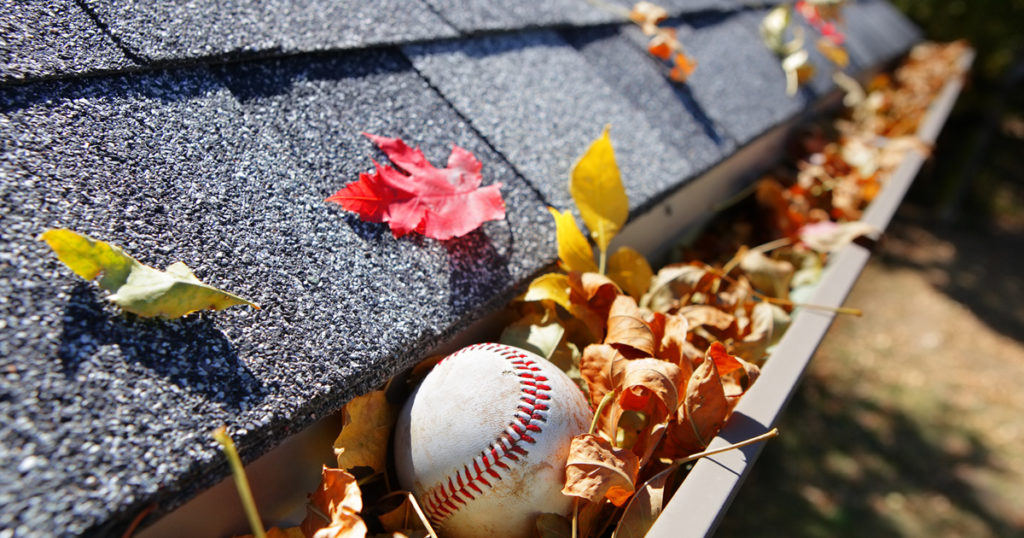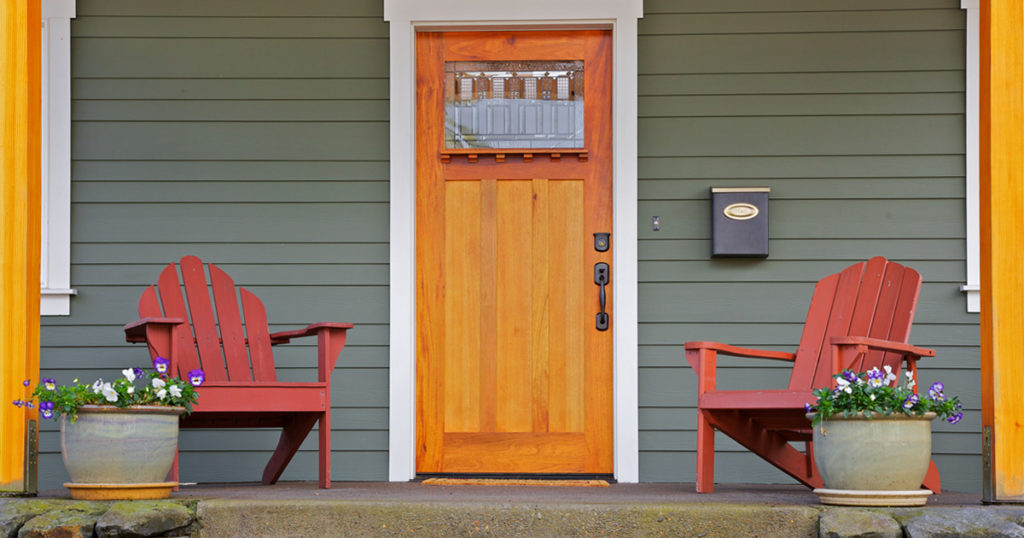Whether you’ve just bought your first home or are a seasoned homeowner, taking care of routine home maintenance is a great way to save time and prevent expensive issues from cropping up in the long run. To help you keep up with key tasks in 2020, here is a year-at-a-glance resource to help you successfully schedule and plan for home upkeep projects during the year ahead. Happy homeownership!
Winter / January to March
- Clean the gutters.
Winter in many places is synonymous with extra precipitation, so it’s a good idea to make sure your gutters and downspouts are clear of debris and ready to drain properly. You could ask neighbors for the name of the company they use to have their gutters cleaned. It’s a quick and easy task for a professional who has the equipment and does this all the time. However, if you’re the handy type and want to tackle it yourself, just make sure to take appropriate safety precautions and enlist a spotter before climbing the ladder and going on the roof. While you’re up there, keep an eye out for any shingles or roof issues and note any that need attention and repair.
- Trim the trees.
Winter is actually a great time to consider having your trees trimmed (any time between late autumn and the first buds of spring). If you’re new to homeowning, it can be helpful to learn from a professional the first time around. Contact your homeowner’s association, if you have one, as they may be able to provide you a list of arborists who service your area and give you helpful background on the neighborhood standards for lawn and tree maintenance. Many arborists or tree specialists will visit your property and prepare a free quote for any services they recommend. Keeping tree limbs trimmed away from the roof and gutters is also a great way to prevent pests like rodents and raccoons from accessing your roof and house.
- Enlist pest control services.
If you don’t already have a quarterly pest control service in place, now would be a great time to start. A pest control specialist can conduct an inspection of your home to see if you have any issues that need to be corrected and provide you a quote for any recommended remedies. Your pest control service person is a great source of education on the types of pests that you should watch out for in your area. This intel can be especially helpful, for example, if you are in the military and have just PCSed to a completely new environment! Hey, it’s nice to know which spiders to worry about, and some pests—such as carpenter ants living near your siding or rodents multiplying in your crawlspace—can be detrimental to your home’s value or structural integrity. Your pest control company should be happy to work with you to accommodate any requests, such as making sure any pest control strategies are safe around children or pets in your home and yard. They should also be able to explain any maintenance, such as repairing chewed garage door seals or replacing torn wire crawlspace vents, that you may be able to do on your own when you see the need.
Spring / April to June
- Clean your windows and sweep the garage.
Moisture and grime can collect on windows during the winter, so early spring is a great time to clean them inside and out. On a warm day, you can pop out your window screens to give them a good spray-off and let them dry on a driveway or patio surface before replacing them. It’s a good way to check for any screens that have degraded or torn, giving you a chance to put in a new screen so you can your windows to enjoy the spring and summer breezes. While you’re waiting for your screens to dry, sweep or use your leaf blower to dust out the garage and remove any dead leaves or cobwebs that have collected around the corners during winter.
- Mulch your plant beds.
Mid to late spring is the perfect time to add fresh mulch to your plant beds, once the ground warms up a bit and small and tender new growth has had a chance to gain a foothold. Mulch protects new roots and can also help keep weeds at bay.
- Clean your rugs and carpets.
If your house has spent lots of time closed up throughout the colder or wetter months, it’s a good time to clear the air—both by opening the windows and also taking care of items such as rugs and carpets that collect, uh, odors. If you’re the do-it-yourself type, you can check with a local hardware store to see if they provide rental carpet cleaners. Now that you can have the windows open to air things out, your freshly cleaned carpets will dry faster.
Summer / July to September
- Check your heating, ventilation, and air-conditioning (HVAC) system.
You can hire a pro to perform an annual maintenance check (nice if you are keeping records on certified maintenance for home resale purposes) or follow guidance from a credible online DIY tutorial to do your own basic cleaning and maintenance, including replacing your filters. If you’re particularly prone to allergy issues, consider having your air ducts professionally cleaned to remove any accumulated pet hair, dust, and debris that has collected throughout the system. Doing this kind of maintenance can keep you, as well as your HVAC system, feeling healthier, giving it a longer and more efficient life overall.
- Pressure wash your patio, pavers, and driveway surfaces.
You’re spending more time outside, so you may as well make it more beautiful and enjoyable! Removing layers of spring runoff, pollen dust, and even moss helps keep these surfaces intact and at their prime for longer. You can check for cracks that may need to be repaired, add fresh sand between stone pavers, and pull weeds that are beginning to grow between sections.
- Paint exterior window frames, sills, and doorframes.
The weather is dryer and warmer, so take advantage of the opportunity to do some exterior painting, especially around windows and doors where water collects during seasonal or regular rainfall. Keeping paint fresh and moisture barriers uncompromised helps keep mildew at bay and prevents rotten and decaying wood at key access points. It’s worthwhile to keep up with painting and ensure the integrity of the existing structure to prevent having to cut out and replace damaged sections of wood siding and frames.
Autumn / October to December
- Love your lawn.
Fall is a great time for lawn aeration, dethatching, seeding, and fertilizing. Aerating and dethatching your lawn allow healthy soil drainage to occur and promote needed oxygen for healthy microflora and fauna and nutrients that keep your lawn at its best. If you live up north, fall is an especially good time to throw seed and fertilize for northern varieties of grass. If you have a built-in sprinkler irrigation system, now is also the time to have it winterized. Check the website for your sprinkler’s manufacturer—many provide the option to search for a certified local associate or company who can come to your property and perform winterization, a preparation that can prevent your system from freezing and causing bursts or damage to underground pipes. Then, be sure to get on their reminder list for springtime sprinkler system setup, too!
- Check your fire extinguisher, smoke detectors, and carbon monoxide detectors.
While you’re setting your clocks back for daylight savings time, take the time to check your lifesaving smoke and carbon monoxide detectors throughout the house, replace batteries, and ensure your fire extinguisher is ready in case of emergency.
- Keep the warmth in.
If you have a fireplace, it’s a good idea to have it checked to make sure it’s safe and ready for heavy winter use. Think about where warmth escapes, as well. To keep out cold drafts and moisture, check and replace weather-stripping seals around doors and ensure windows are making a good seal.
Whether you’re new to owning a home in general, or just to owning a home in a new geographical area, this list can be a helpful starting point for your annual home maintenance tracking. Keeping up with routine tasks is a great way to save you time and money in the long run, and also helps to keep your home in the best shape possible should you decide to put it on the market again before a future move.



